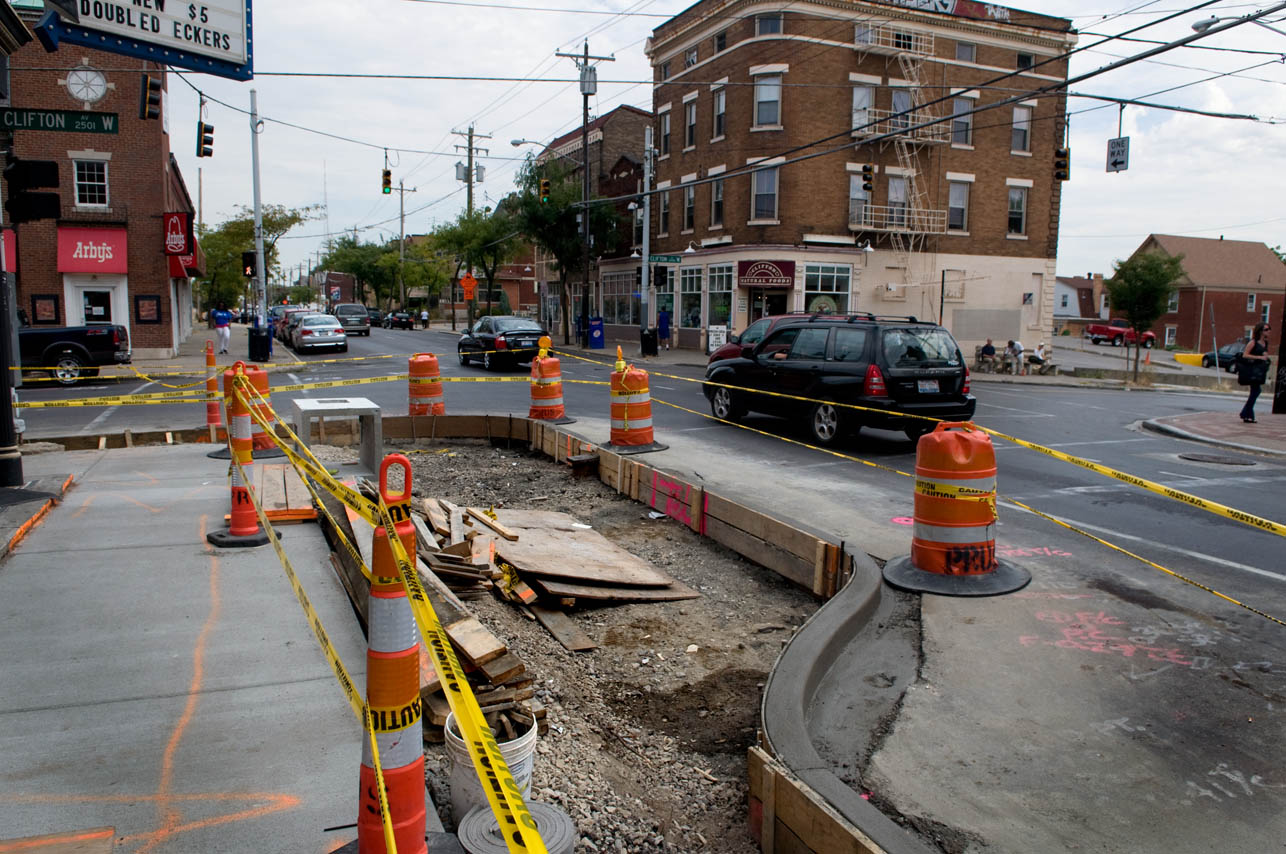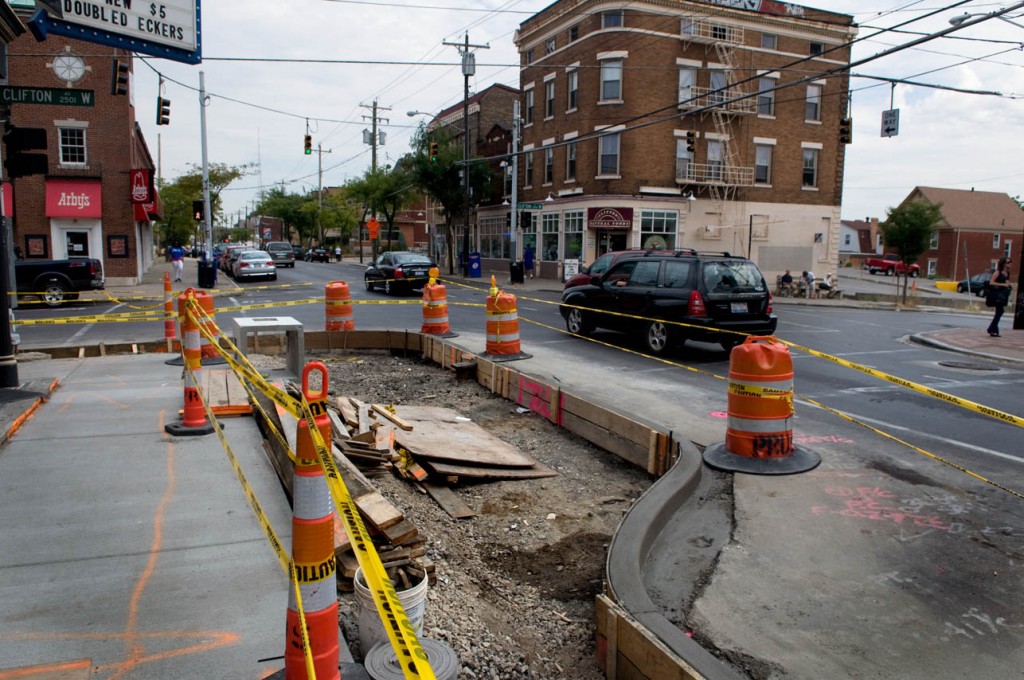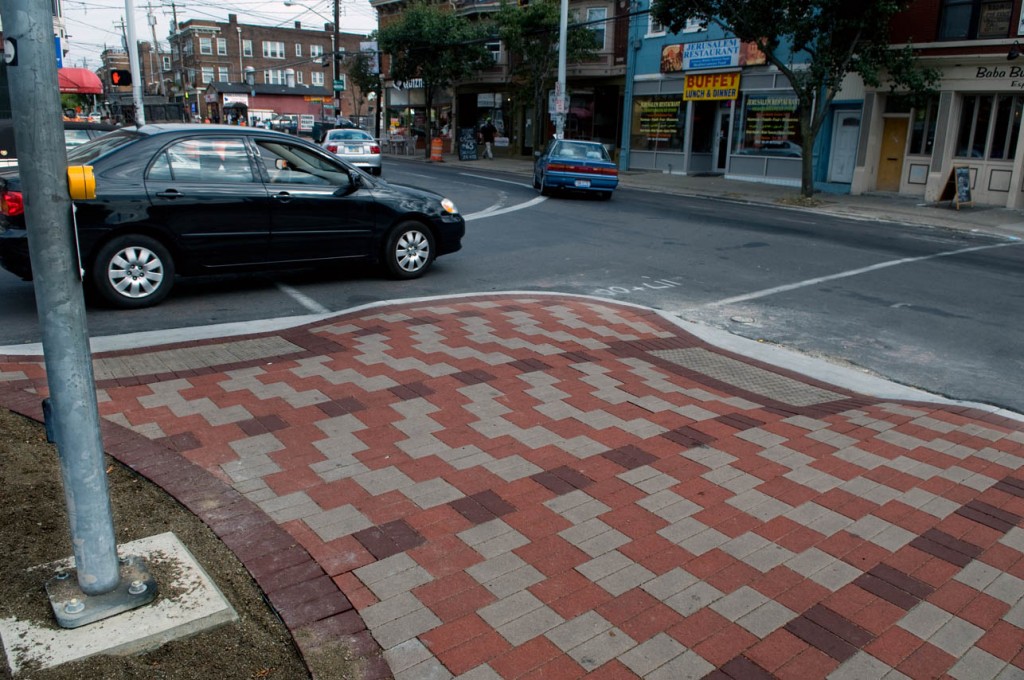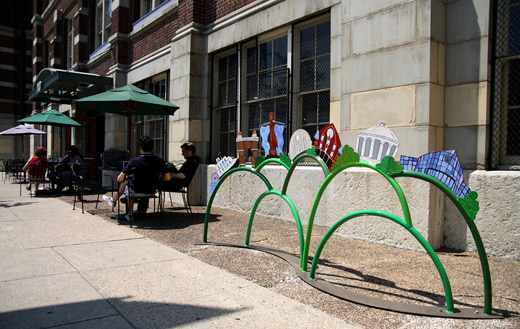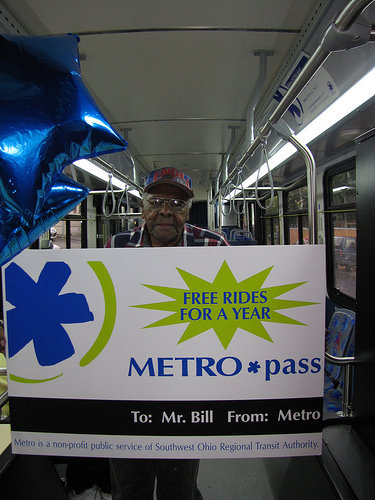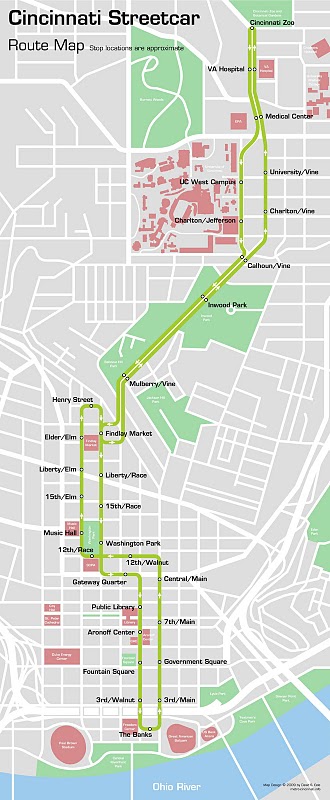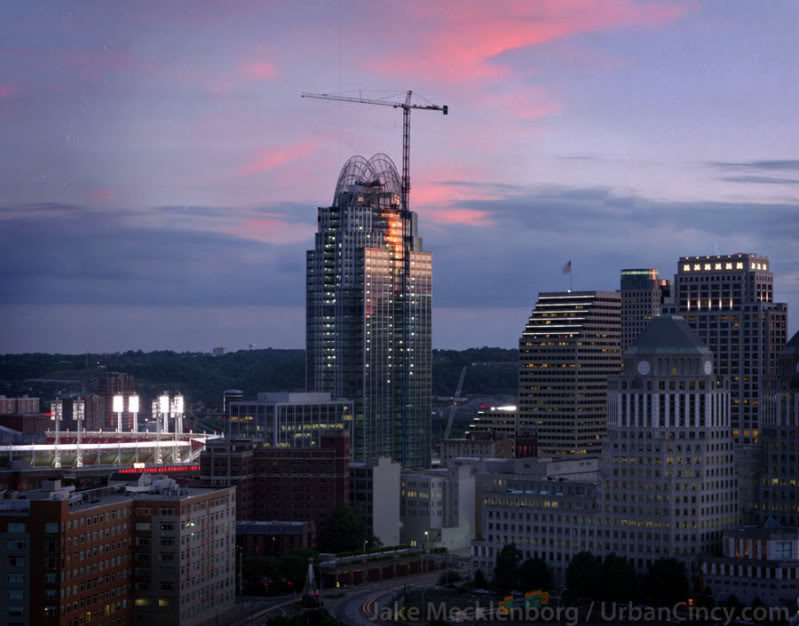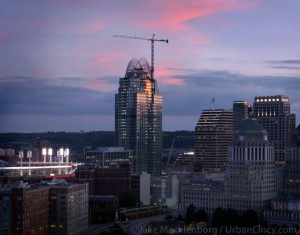Significant progress has been made on the first-phase of streetscaping improvements throughout the Clifton Heights business district. Over the past two months work has been taking place along W. McMillan Street to rebuild sidewalks, crosswalks, curbs, and more. The projected $440,000 project will also include new street lamps, parking meters, trash cans, and street trees.
This stretch of W. McMillan Street had long been plagued by buckled sidewalks due to root invasion from the street trees there and water that subsequently collected. The rebuilt sidewalks not only feature safe and pleasant surfaces for pedestrians, but they also feature uniquely designed brick work at cross walk locations.
The improvement work has been championed by the Clifton Heights Urban Redevelopment Corporation (CHCURC) whose director, Matt Bourgeois, said that “the business community is very excited about the progress being made.”
Some of that progress has been quite noticeable including several facade improvement projects; business expansions and renovations by DuBois Bookstore, Plaza Artist Supplies, and Mac’s Pizza Pub; and the addition of several new businesses to the district.
The first phase of streetscaping improvements, nearing their expected completion in October 2010, were funded through the Cincinnati Neighborhood Business Districts United (CNBDU) and the City of Cincinnati. The later two phases will continue the streetscaping work throughout the district over the next two years depending on funding.
